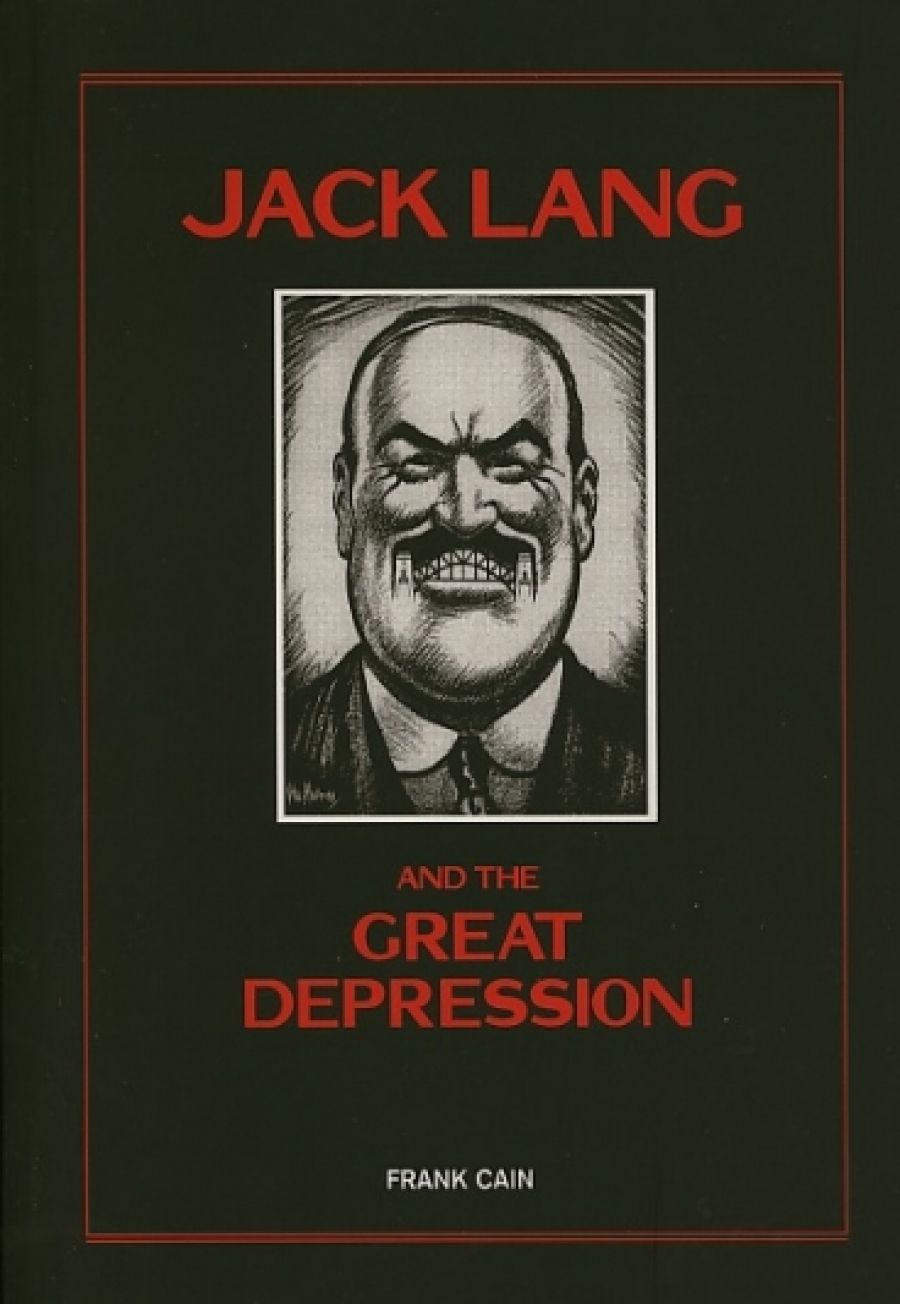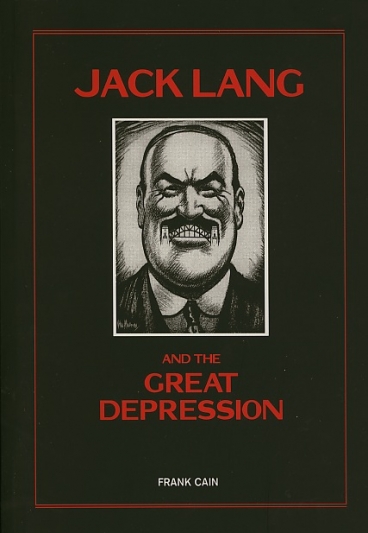
- Free Article: No
- Contents Category: Australian History
- Review Article: Yes
- Article Title: Big Fella
- Online Only: No
- Custom Highlight Text:
Jack Lang was born to a poor watchmaker’s family in Sydney in 1876. He was twice premier of NSW and founder of two breakaway Labor parties. Lang lives on in the popular imagination as that hapless figure at the opening of the Sydney Harbour Bridge in 1932, upstaged when the sword-wielding Captain de Groot of the right-wing New Guard rode in and slashed Lang’s official opening ribbon. De Groot’s ribbon-slashing wins passing notice in Frank Cain’s story of Jack Lang. Very little else in Lang’s life does. His youthful encounters with socialism during the 1890s Depression, his marriage to Hilda Bredt – daughter of feminist–socialist Bertha Bredt – or his success as a real estate agent in Auburn are not important in this story, for Cain places Lang firmly within a framework of economic and constitutional history.
- Book 1 Title: Jack Lang and the Great Depression
- Book 1 Biblio: Australian Scholarly Publishing, $34.95 pb, 393 pp
- Book 1 Cover Small (400 x 600):

- Book 1 Cover (800 x 1200):

It was the states’ mistake in allowing the Commonwealth to seize control of customs and excise revenue that Cain sees as the cause of their weakness. Any state attempts to redistribute wealth were further restricted by the Commonwealth’s Loan Council. Despite such obstacles, Lang, during his first term as premier between 1925 and 1927, set out a radical programme. As premier, he created a workers’ compensation scheme and state pensions for widows with dependent children. Lang, popularly known as ‘The Big Fella’, abolished student fees in state secondary schools and reformed voting in local government elections. The fate of such projects is not central to this book, with its focus on the second Lang government of 1930–32. Elected NSW premier in the depths of the Depression, Lang sought to minimise the suffering of workers, bringing him into inevitable and lasting conflict with Canberra. Lang’s ‘plan’ of withholding interest repayments to British banks and taking Australia off the gold standard are covered in some detail. Lang emerges as a defender of not only the unemployed but of states’ rights, for which he earned the lasting enmity of Labor’s interwar prime minister, James Scullin.
Through an Unemployed Relief Fund, preference to local NSW firms in government purchasing and, more controversially, a state lottery and a ten per cent tax on winning bets paid for by bookies, Lang sought to turn around his state’s collapsed economy. The NSW Government Savings Bank crashed within six months of Lang taking office as premier, and from that point onwards his relations with Canberra and the Federal ALP soured. He continued with his own strategies, introducing a Greater Sydney Bill in 1931, cutting public service salaries by twenty per cent and seeking higher company taxes. At odds not only with the Commonwealth but by now with the king’s new man in NSW, Governor Sir Philip Game, Lang’s cards were well marked. On 13 May 1932, Game dismissed Lang. An unrepentant Lang, expelled from office as premier and then twice expelled from the Australian Labor Party, insisted in subsequent speaking engagements that his career was best captured in the Labor Party’s 1932 election slogan, ‘Lang is Right’.
The strength of this account of Lang lies in turning away from the more popularised images of ‘The Big Fella’. The narrative builds from within an economic history of NSW during the Depression and of commonwealth–state relations during the first third of the twentieth century. Lang is seen as playing a radical role in federal–state relations and as seeking, through local planning and policy, to defend his constituents from the worst ravages of the Depression. The book is thus a timely reminder of broader historical frameworks often left out of university history courses. Yet we could do with a more personalised account. After all, this is a book about Jack Lang and the Depression, not Canberra versus Sydney. Lang, here, is almost another impersonal factor in the long contest over which constitutional entity can best spend the taxpayer’s money. Lang’s battles with the Labor Party, his overbearing tactics towards his own colleagues and his personal reaction to the Depression are left almost entirely out of this story. Only a close reading would alert us to Lang’s splitting of the NSW Labor Party and to the damage he did, even when remaining ‘Right’, to Labor’s fortunes. It is tempting, in the light of Cain’s detailed analysis of constitutional structures and economic history, to draw parallels with Sir John Kerr’s dismissal of that other towering NSW ‘Big Fella’. But a more apt comparison can be drawn with John Cain Jnr’s Victorian Labor government of the 1980s, which attempted, in defiance of conservatives in and out of the Labor Party in Canberra, to build redistributionist policies at state level, and which was brought undone by a bank collapse. Frank Cain continues the rehabilitation of Lang as working-class hero, a process commenced with his readmission to the Australian Labor Party in 1971.


Comments powered by CComment